Rodent Power
Posted on 12. Dec, 2021 by Paul Sochaczewski in Ganesha and Collecting
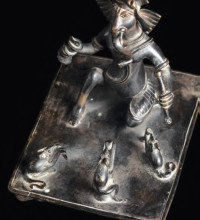
The Lone Ranger rode a loyal white horse named Silver during his battles with Wild West outlaws. Batman drove the Batmobile to help him stamp out Gotham City villains. Santa has a sleigh, pulled by eight flying reindeer, to help him bring joy to countless children.
Ganesha, arguably a far more important global celebrity, has a mouse named Musika (also called Mooshikasura or Mooshika).
Why should such a majestic god have an insignificant mouse as his vehicle?
A common question, especially from folks unfamiliar with Hindu tradition.
The answer lies in two parts.
Read MoreHow Marketing Geniuses Created the Most Popular God in the Hindu Pantheon
Posted on 12. Dec, 2021 by Paul Sochaczewski in Ganesha and Collecting

Ganesha, the elephant-headed deity that is the most popular deity in the vast Hindu pantheon, owes his existence, and his status, to 5th-century religious marketing geniuses.
The problem they faced was that rural villagers felt under-appreciated by the Hindu gods that served the urban upper classes. After long nights of brainstorming, and after sacrificing masses of Post-It notes, they came up with several strategies.
The Hindu marketing folks needed the buy-in of the farmers, so they adapted a popular elephant-headed Animistic goblin-deity who was a creator of obstacles, and turned him into a well-dressed, positive, super-god who was a remover of obstacles.
Read MoreHow Ganesha Helped Me Find Hanuman’s Mountain
Posted on 12. Dec, 2021 by Paul Sochaczewski in Ganesha and Collecting

“Much further?” I asked, breathing heavily. I was at about 3,500 meters high in the Indian Himalaya, and the sun was going down while the snow was coming in.
“Not far,” my friend Gopal-ji said, with the slight disdain that mountain people use when talking to out-of-breath city folks.
I was nearing the culmination of a quest I had dreamed of for some 20 years. I wanted to visit Hanuman’s Mountain.
Read MoreWhy Do Hindu Gods Rely on Nature Symbolism?
Posted on 11. Dec, 2021 by Paul Sochaczewski in Ganesha and Collecting
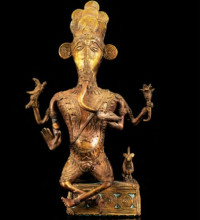
Elephants and mice. Tigers and peacocks. Eagles, cobras, and an inordinate abundance of lotuses. Hindu gods are largely defined by their connection with nature symbols.
For instance, all major Hindu gods have animal vahanas, a term that might be interpreted as a vehicle, chariot, assistant, or complement.
Ganesha, famously, has a mouse named Musika.
Shiva, Ganesha’s father, is accompanied by a bull named Nandi.
Hi mother Parvati has Dawon, a lion, and his brother Kartikeya has Parvani, a peacock.
These animals were chosen by Hindu myth-makers because they represent memorable symbols that reflect the power and personality of each god.
Read MoreWhy Does Ganesha Have an Elephant Head?
Posted on 11. Dec, 2021 by Paul Sochaczewski in Ganesha and Collecting

Like all superheroes, Ganesha has a memorable origin myth, and the story of Ganesha’s creation, and the reason he has an elephant head, is one of Hinduism’s great tales. Like many Hindu myths there are multiple variations, but here’s my favorite, which is also the most commonly cited. It shows Ganesha as an embodiment of the Lord of Beginnings – he is created intact, then rent asunder, and ultimately made whole, but in a modified form.
Read MoreChubby, with an Insatiable Sweet-Tooth
Posted on 06. Dec, 2021 by Paul Sochaczewski in Ganesha and Collecting
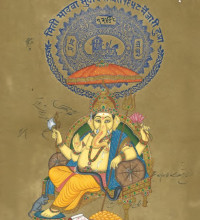
If Swiss psychiatrist and psychoanalyst Carl Jung had wanted just one Hindu god to study for symbolic complexity, it would have been Ganesha.
For a start, Ganesha has 74 different attributes, or physical symbols, that artists can feature.
And then there is Ganesha’s belly.
Read MoreGanesha and Santa Claus
Posted on 05. Dec, 2021 by Paul Sochaczewski in Ganesha and Collecting
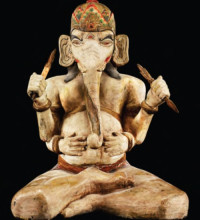
Some people (well, me, primarily) have compared the generous Hindu elephant-headed god Ganesha to the similarly kind-hearted Santa Claus. They are remarkably similar, and anthropological taxonomists (a couple of my friends who took Anthro 101 at university) consider the two personalities to be at least first cousins, and possibly twin brothers, separated at birth. We await DNA analysis.
Here’s the evidence.
Read More“Are You Strong Enough to Go Through with This?”
Posted on 17. Nov, 2021 by Paul Sochaczewski in Curious Travel
This true personal journey is one of dozens of true stories published in: Curious Encounters of the Human Kind – Borneo and Dead, But Still Kicking “ARE YOU STRONG ENOUGH TO GO THROUGH WITH THIS?” Encounters with female vampire ghosts in a city built on a ghost story. PONTIANAK, West Kalimantan The […]
Read More“Lost” Indonesia Jews Recruited to Fulfil Biblical Prophecy
Posted on 16. Nov, 2021 by Paul Sochaczewski in Curious Travel

“Lost” Indonesian Jews Recruited to Fulfil Biblical Prophecy Small clan taken to Israel to hasten Second Coming. KISAR ISLAND, Maluku Islands, Indonesia This is a story of serendipity and remarkable zeal born of one woman’s lifetime religious quest. It is a tale of unasked for fame for simple people, and of journeys they […]
Read MoreA Renoir in the Attic
Posted on 25. Aug, 2021 by Paul Sochaczewski in Alfred Russel Wallace and his assistant Ali
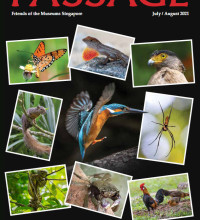
Alfred Russel Wallace makes starting discoveries in Singapore, and how biodiversity can be found in everyone’s backyard. Centerfold article in the July/August 2021 magazine Passage, published by Friends of the Museums Singapore.
Read MoreIs nature conservation a form of Green Colonialism?
Posted on 29. Jan, 2021 by Paul Sochaczewski in Environment, Environment EarthLove

Is nature conservation a form of Green Colonialism? In a world rich in uncertainties and conflicting values, surely nature conservation is a universally accepted, politically correct goal that people worldwide agree on? Well, not really. Nature conservation is regularly accused of being a neo-colonial escapade. It’s called “green colonialism.” A 2018 article in Foreign Policy […]
Read MoreECOCIDE – Should killing nature be an international crime?
Posted on 29. Jan, 2021 by Paul Sochaczewski in Environment, Environment EarthLove

Ecocide – Should Killing Nature be an International Crime? Should killing nature be an international crime? A recent BBC article notes: “From the Pope to Greta Thunberg, there are growing calls for the crime of “ecocide” to be recognised in international criminal law. But could such a law ever work?” Courts in numerous jurisdictions have […]
Read MoreUS VS THEM: Why tribal people and nature get screwed by Asian governments and business leaders
Posted on 17. Oct, 2020 by Paul Sochaczewski in Environment, Environment EarthLove

This short article is inspired by EarthLove. The book is fiction, the issues are real. US vs THEM Why tribal people and nature get screwed by Asian governments and business leaders In Borneo, paternalistic governments and avaricious businesspeople devalue rural folks and the environments on which they rely. Such arrogance often leads to environmental destruction, […]
Read MoreUNCONDITIONAL LOVE: Why people adore orangutans
Posted on 17. Oct, 2020 by Paul Sochaczewski in Environment, Environment EarthLove

This short article is inspired by EarthLove. The book is fiction, the issues are real. UNCONDITIONAL LOVE Why people adore orangutans One underlying theme of my new satiric novel EarthLove is the affinity people have with orangutans. I’ve never met anyone who has worked with orangutans who hadn’t developed a close emotional bond with the […]
Read MoreDON’T SCOLD ME, I’M JUST ENJOYING AN ICE CREAM: How Western consumerism fuels rainforest destruction and kills orangutans
Posted on 17. Oct, 2020 by Paul Sochaczewski in Environment, Environment EarthLove

This short article is inspired by EarthLove. The book is fiction, the issues are real. DON’T SCOLD ME, I’M JUST ENJOYING AN ICE CREAM How Western consumerism fuels rainforest destruction and kills orangutans Enjoying that ice cream? With every delicious lick you’re killing orangutans. Rarely has a conservation problem been stated in such stark and […]
Read More